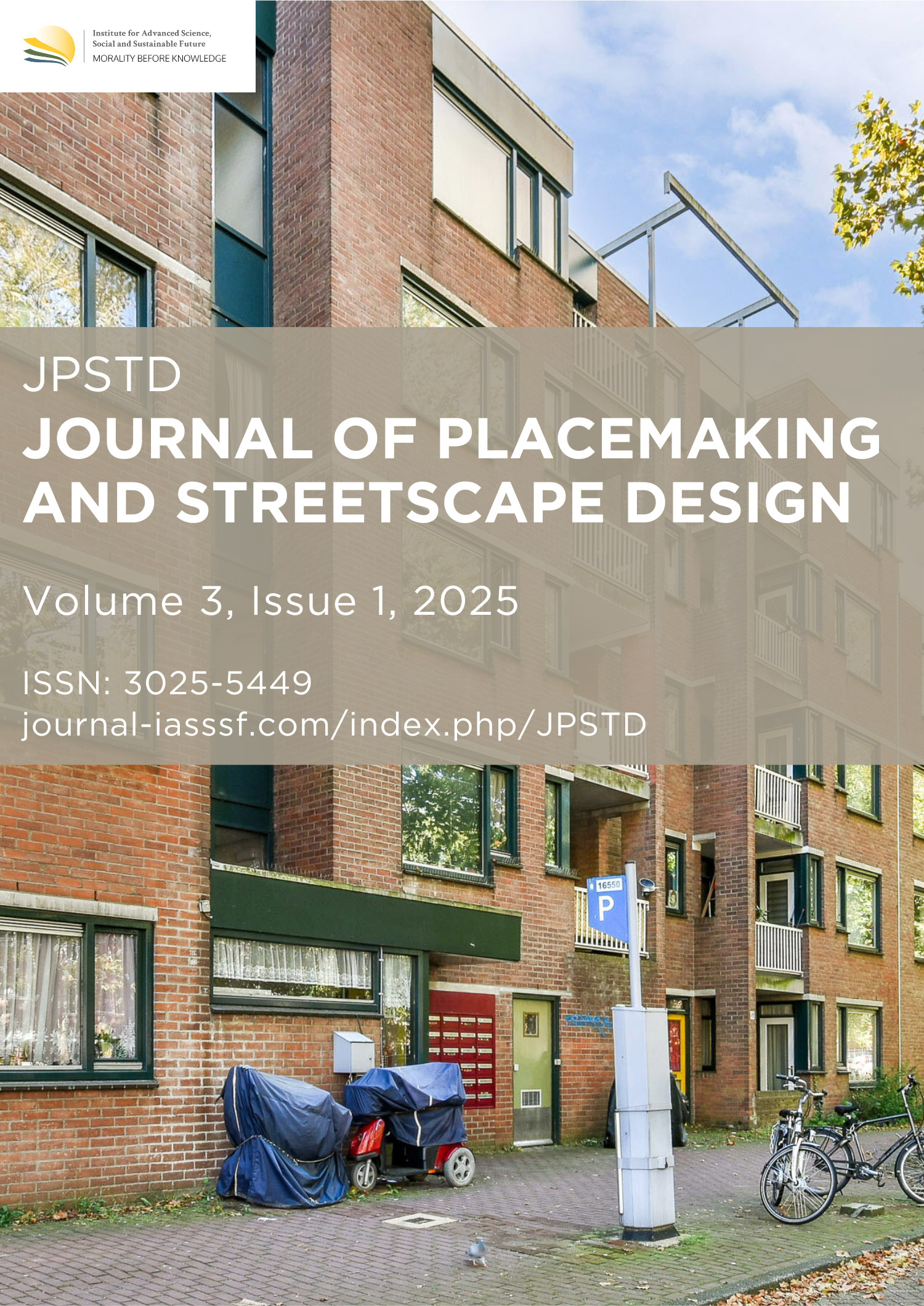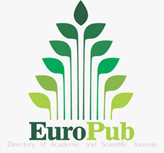Environmentally-conscious cities: Energy transformation through ecoregional planning and carbon trading for sustainable regional development
DOI:
https://doi.org/10.61511/jpstd.v3i1.2025.2168Keywords:
climate resilience, ecoregional planning, land conservation, renewable energy, sustainable developmentAbstract
Background: The global climate crisis and dependency on fossil fuels pose serious threats to food, water, and energy security in Indonesia, particularly in ecologically and economically strategic regions such as Garut Regency. This research proposes an integrated strategy for sustainable regional development based on ecoregional planning and carbon trading, addressing spatial inequality, environmental degradation, and clean energy transformation. Methods: Spatial-territorial analysis and participatory cross-sectoral policy review serve as the primary methodology, supplemented by stakeholder interviews and geospatial assessments. Findings: The findings reveal significant renewable energy potential in Garut, including geothermal (PLTP Darajat), solar, micro-hydro, and biomass from agricultural waste. However, 52.57% land-use misalignment, a 42.46% decline in forest area, and water deficits in 19 sub-districts endanger ecosystem stability and local economic resilience. Strategic ecoregional planning, including environmental carrying capacity-based zoning, 45% protected area retention, and renewable energy integration into spatial plans, can reverse these negative trends. Implementation requires multi-sectoral collaboration involving government, private sector, and communities, supported by green technologies and innovative financing (APBD, KPBU, CSR). The environmental benefits encompass biodiversity conservation, enhanced climate resilience, and emission reductions toward the net-zero emissions 2045 target. Conclusion: This study concludes that Garut’s transformation into an energy-independent, socially equitable, and ecologically resilient region can serve as a national model for achieving the Golden Indonesia 2045 vision. Novelty/Originality of this article: The novelty of this article lies in proposing an integrated ecoregional planning and carbon trading framework as a scalable model for aligning spatial planning, renewable energy development, and socio-political risk management in regional sustainability transitions.
References
Abram, S., Atkins, E., Dietzel, A., Jenkins, K., Kiamba, L., Kirshner, J., Kreienkamp, J., Parkhill, K., Pegram, T., & Santos Ayllón, L. M. (2022). Just Transition: A whole-systems approach to decarbonisation. Climate Policy, 22(8), 1033–1049. https://doi.org/10.1080/14693062.2022.2108365
Agrawal, A., & Gibson, C. C. (1999). Enchantment and Disenchantment: The Role of Community in Natural Resource Conservation. World Development, 27(4), 629–649. https://doi.org/10.1016/S0305-750X(98)00161-2
Alisjahbana, A. S., & Murniningtyas, E. (with Unpad Press). (2018). Tujuan pembangunan berkelanjutan di Indonesia: Konsep, target, dan strategi implementasi (Cetakan 1). Unpad Press.
Archibald, C. L., Dade, M. C., Sonter, L. J., Bell-James, J., Boldy, R., Cano, B., Friedman, R. S., Siqueira, F. F., Metzger, J. P., Fitzsimons, J. A., & Rhodes, J. R. (2021). Do conservation covenants consider the delivery of ecosystem services? Environmental Science & Policy, 115, 99–107. https://doi.org/10.1016/j.envsci.2020.08.016
Capoor, K., & Ambrosi, P. (2009). State and Trends of the Carbon Market 2009. World Bank, Washington, DC. https://doi.org/10.1596/13402
Conway, T. M., & Lathrop, R. G. (2005). Modeling the Ecological Consequences of Land-Use Policies in an Urbanizing Region. Environmental Management, 35(3), 278–291. https://doi.org/10.1007/s00267-004-4067-x
Daryanto. (2007). Energi: Masalah dan Pemanfaatannya Bagi Kehidupan Manusia. Pustaka Widyatama.
Friedmann, J. (1970). Regional development policy: A case study of Venezuela (2. print). M.I.T. Press.
Holling, C. S. (1978). Adaptive environmental assessment and management. John Wiley & Sons.
IESR. (2022). Indonesia Energy Transition Outlook 2023: Tracking Progress of Energy Transition in Indonesia: Pursuing Energy Security in the Time of Transition (Nos. 3032–0917). Institute for Essential Services Reform (IESR). https://iesr.or.id/wp-content/uploads/2022/12/Indonesia-Energy-Transition-Outlook_2023.pdf
Gil-Ozoudeh, I., Iwuanyanwu, O., Okwandu, A. C., & Ike, C. S. (2023). Sustainable urban design: The role of green buildings in shaping resilient cities. International Journal of Applied Research in Social Sciences, 5(10), 674-692. https://doi.org/10.51594/ijarss.v5i10.1481
Jack, B. K., Kousky, C., & Sims, K. R. E. (2008). Designing payments for ecosystem services: Lessons from previous experience with incentive-based mechanisms. Proceedings of the National Academy of Sciences, 105(28), 9465–9470. https://doi.org/10.1073/pnas.0705503104
Jepson, P., & Whittaker, R. J. (2002). Ecoregions in Context: A Critique with Special Reference to Indonesia. Conservation Biology, 16(1), 42–57. https://doi.org/10.1046/j.1523-1739.2002.01143.x
Jessop, B. (2010). Cultural political economy and critical policy studies. Critical Policy Studies, 3(3–4), 336–356. https://doi.org/10.1080/19460171003619741
Le, T.-A. T., Vodden, K., Wu, J., Bullock, R., & Sabau, G. (2024). Payments for ecosystem services programs: A global review of contributions towards sustainability. Heliyon, 10(1), e22361. https://doi.org/10.1016/j.heliyon.2023.e22361
Millennium Ecosystem Assessment (Program) (Ed.). (2005). Ecosystems and human well-being: Synthesis. Island Press.
Moradi, A., & Rahmati, S. (2023). Ecoregional Planning: An Overview of Concepts and Approaches. Current Urban Studies, 11(04), 682–707. https://doi.org/10.4236/cus.2023.114035
Newell, P., & Mulvaney, D. (2013). The political economy of the ‘just transition.’ The Geographical Journal, 179(2), 132–140. https://doi.org/10.1111/geoj.12008
Odum, E. P. (1969). The Strategy of Ecosystem Development: An understanding of ecological succession provides a basis for resolving man’s conflict with nature. Science, 164(3877), 262–270. https://doi.org/10.1126/science.164.3877.262
Ostrom, E. (1990). Governing the Commons: The Evolution of Institutions for Collective Action (1st ed.). Cambridge University Press. https://doi.org/10.1017/CBO9780511807763
Ostrom, E. (2010). Beyond Markets and States: Polycentric Governance of Complex Economic Systems. American Economic Review, 100(3), 641–672. https://doi.org/10.1257/aer.100.3.641
Pascual, U., Phelps, J., Garmendia, E., Brown, K., Corbera, E., Martin, A., Gomez-Baggethun, E., & Muradian, R. (2014). Social Equity Matters in Payments for Ecosystem Services. BioScience, 64(11), 1027–1036. https://doi.org/10.1093/biosci/biu146
Paudel, P. K., Parajuli, S., Bohara, M., Kibria, M. G., Abedin, Md. A., & Sinha, R. (2024). Mainstreaming ecosystem-based approaches into disaster risk reduction policies: A comparative study of Nepal, India, and Bangladesh. Policy Design and Practice, 7(3), 324–342. https://doi.org/10.1080/25741292.2024.2368919
Pereira, S., Silva, C., & Ferreira, L. M. D. F. (2025). Barriers to energy transition: Comparing developing with developed countries. Energy for Sustainable Development, 87, 101753. https://doi.org/10.1016/j.esd.2025.101753
Pinelli, M., & Maiolini, R. (2017). Strategies for Sustainable Development: Organizational Motivations, Stakeholders’ Expectations and Sustainability Agendas. Sustainable Development, 25(4), 288–298. https://doi.org/10.1002/sd.1653
Porter, M. E. (1991). The competitive advantage of nations. MacMillan.
Pusparini, W., Cahyana, A., Grantham, H. S., Maxwell, S., Soto-Navarro, C., & Macdonald, D. W. (2023). A bolder conservation future for Indonesia by prioritising biodiversity, carbon and unique ecosystems in Sulawesi. Scientific Reports, 13(1), 842. https://doi.org/10.1038/s41598-022-21536-2
Santos Ayllón, L. M., & Jenkins, K. E. H. (2023). Energy justice, Just Transitions and Scottish energy policy: A re-grounding of theory in policy practice. Energy Research & Social Science, 96, 102922. https://doi.org/10.1016/j.erss.2022.102922
Sovacool, B. K., Heffron, R. J., McCauley, D., & Goldthau, A. (2016). Energy decisions reframed as justice and ethical concerns. Nature Energy, 1(5), 16024. https://doi.org/10.1038/nenergy.2016.24
Stavins, R. N. (1998). What Can We Learn from the Grand Policy Experiment? Lessons from SO2 Allowance Trading. Journal of Economic Perspectives, 12(3), 69–88. https://doi.org/10.1257/jep.12.3.69
Tietenberg, T. H. (2006). Emissions trading: Principles and practice (2nd ed). Resources for the future press.
UNEP (Ed.). (2022). The closing window: Climate crisis calls for rapid transformation of societies. United Nations Environment Programme.
Veckalne, R., & Tambovceva, T. (2022, May 23). SUSTAINABLE REGIONAL DEVELOPMENT PLANNING. 12th International Scientific Conference „Business and Management 2022“, Vilnius Gediminas Technical University, Lithuania. https://doi.org/10.3846/bm.2022.799
Wheeler, S. (2013). Planning for Sustainability: Creating Livable, Equitable and Ecological Communities (2nd ed.). Routledge. https://doi.org/10.4324/9780203134559
World Bank. (2022). State and Trends of Carbon Pricing 2022. Washington, DC: World Bank. https://doi.org/10.1596/978-1-4648-1895-0
Zeng, X., Yu, Y., Yang, S., Lv, Y., & Sarker, M. N. I. (2022). Urban Resilience for Urban Sustainability: Concepts, Dimensions, and Perspectives. Sustainability, 14(5), 2481. https://doi.org/10.3390/su14052481
IPCC. (2021). Climate Change 2021: The Physical Science Basis. IPCC Sixth Assessment Report. https://www.ipcc.ch/report/ar6/wg1/
UN. (2015). Transforming Our World: The 2030 Agenda for Sustainable Development. United Nations.
UNFCCC (2015). Paris Agreement. United Nations Framework Convention on Climate Change.
Van Noordwijk, M., & Lasco, R. (2016). Agroforestry in Southeast Asia: Bridging the Forestry–Agriculture Divide for Sustainable Development. Policy Brief, (67). https://www.cifor-icraf.org/publications/region/sea/publications/softcopy/policybrief/PB0126-16.pdf
Downloads
Published
How to Cite
Issue
Section
Citation Check
License
Copyright (c) 2025 Khoirul Falah

This work is licensed under a Creative Commons Attribution 4.0 International License.
















